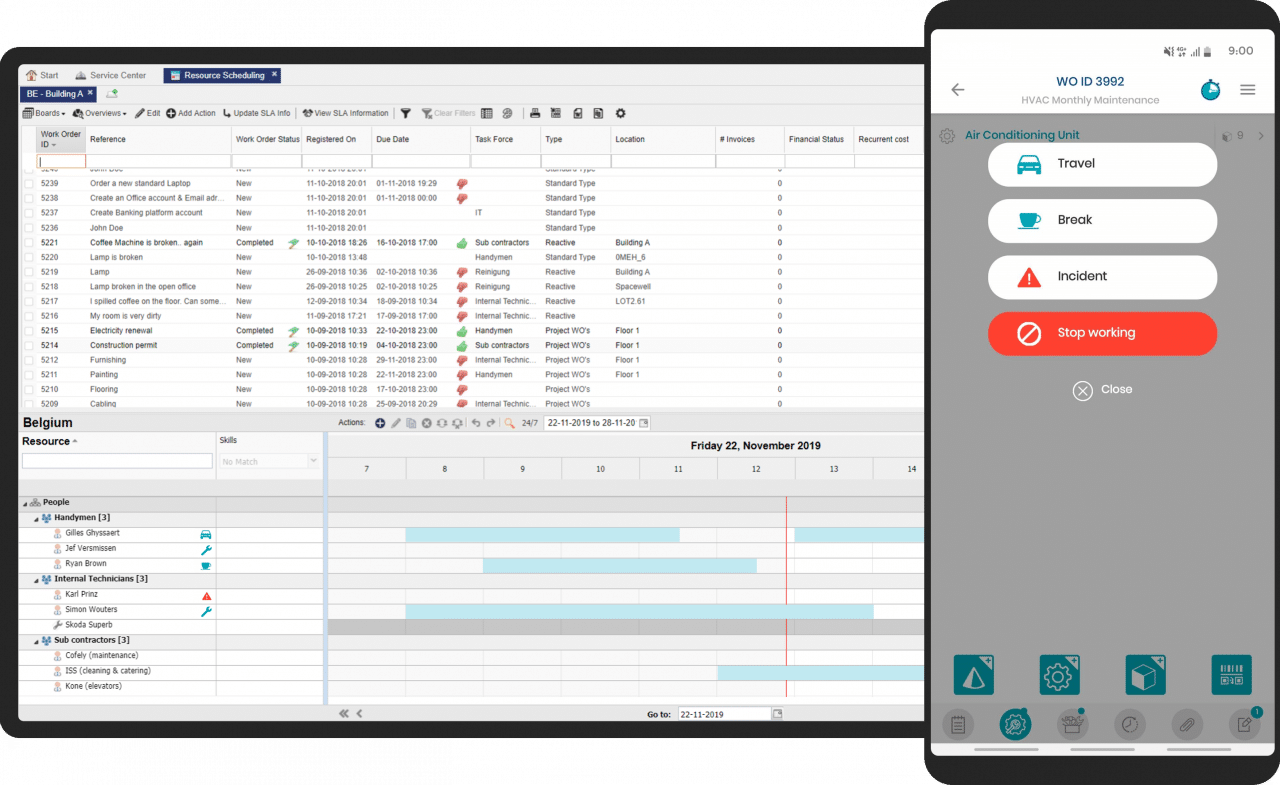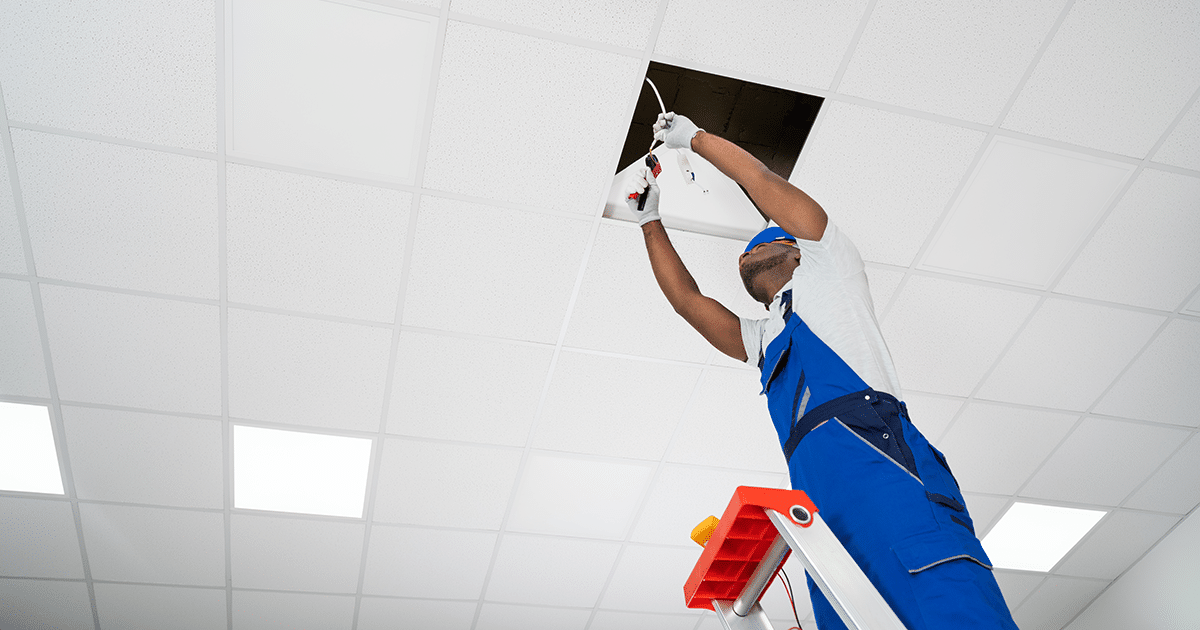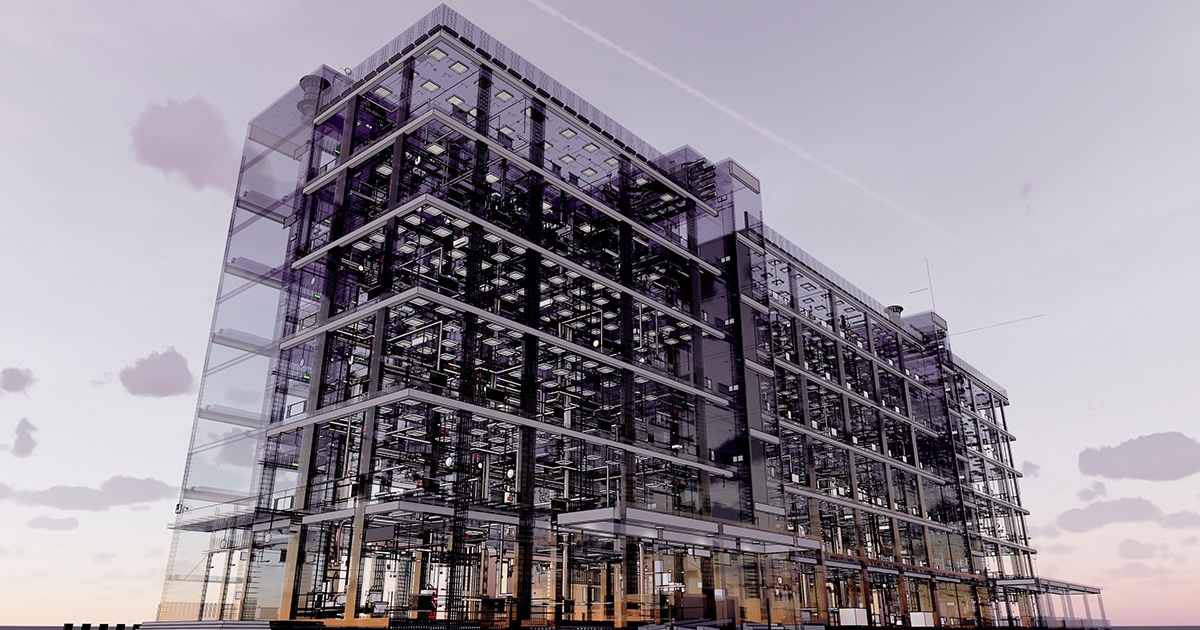The implementation of CMMS software to improve maintenance management is generally a good idea that can bring substantial savings. However, its success depends greatly on the chosen solution.
Indeed, choosing software that is not adapted to the company’s needs can have disastrous consequences. This may be because the software is too limited in functionality, cannot evolve over time, or is unable to integrate efficiently with other digital tools.
What are the essential capabilities of CMMS software?
Any good CMMS software must provide these essential capabilities:
Creation of service requests (maintenance tickets)
This is the basic function of any CMMS software. When building users encounter a defect, they should be able to easily create a maintenance intervention request (ticket) in the software. This capability is essential for the management of corrective maintenance, where technicians resolve reported issues.
Inventory of premises, assets, and equipment
CMMS software must allow you to inventory all your premises, assets, and equipment. In addition, a high-performance solution allows you to locate the various pieces of equipment, manage them by category, and add descriptions and documents.
Work order management
A good CMMS solution lets you define corrective maintenance work order types with their own workflows and statuses. It should allow you to create templates for recurring tasks and define auto-assignment rules to speed up the time to dispatch and time-to-resolve.
Another important requirement is that you can manage your workers and suppliers in one single environment and keep tabs on intervention times and overall performance (SLA compliance).

Work scheduler and work status
Preventive maintenance management
Effective maintenance management goes beyond the repairs and troubleshooting that constitute corrective maintenance. It includes planned maintenance to prevent equipment failure before it occurs, and to reduce the risk of accidents.
In concrete terms, this means being able to set up coherent maintenance plans, schedule inspections and controls, ensure the compliance of equipment subject to specific regulations and be able to view spare parts inventories.
Read also: The role of CMMS in preventive maintenance
Mobile CMMS
By choosing a solution that provides a mobile version, you enable your maintenance technicians to be much more responsive and efficient in their work. They save a lot of time if they can consult all relevant information on their smartphone or tablet and manager their work on the go. This includes having access to the maintenance history and technical documentation of the equipment they are taking care of and being able to submit their intervention report in real time. For building inspections and condition assessment, a mobile solution offers obvious benefits.
Read also: What are the key advantages of a mobile CMMS solution for your organization?
Management of personnel and participants
Essential to the planning of interventions, this functionality facilitates the monitoring of personnel, including qualifications and authorizations, intervention times, incidents, and absences. It also allows you to monitor the progress of interventions and to carry out reassignments, to redeploy teams in case of urgent interventions.
CMMS open to the company’s software ecosystem
The days of compartmentalized CMMS are over. Indeed, CMMS plays a strategic role in the management of assets and must natively have standard interfaces to exchange with all types of software in the ecosystem: energy, invoicing, furniture inventory…
Choosing a CMMS adapted to service sector activities
For facility and property management professionals, it is essential they equip themselves with CMMS that offers capabilities specific to their sector.
Workspace management
With the recent evolution of working methods, it is unthinkable today for professionals in charge of the maintenance and operation of office buildings to have a CMMS that doesn’t offer workspace management functionality: measurement of occupancy rates, room reservations, etc.

Access to BIM
BIM (Building Information Modeling) is an approach that consists of developing a digital model of a building to facilitate its design, construction, and operation. It is increasingly used for managing asset inventories and maintenance. CMMS software that can incorporate this technology offers a great advantage to maintenance professionals, as it facilitates communication, collaboration, and the coordination of interventions by all parties involved.
Read also: BIM for FM or how to facilitate building maintenance during the operational phase
Smart Buildings
A “smart building” is a term used to describe the digital technologies that allow for the collection of data in real time about the operation of a building (occupancy, temperature, etc.). Thanks to this data, all maintenance actors can adjust their actions and reduce operating costs, while also extending the life of the installations and providing better services to users.
The advantages of this technology are significant. It is therefore strongly recommended to choose CMMS software capable of collecting and leveraging data provided by sensors typically used in smart buildings.
Read also: What is a smart building?
Free CMMS software: a good idea?
For any IT tool, one may be tempted to find a free solution to take advantage of the same features as paid software without paying a cent. Is this possible in the case of CMMS?
We won’t keep the suspense for long: the answer is no. As there is no real open-source CMMS software, only 2 types of solutions could be considered as free CMMS: Excel and trial versions of paid software.
Can we manage our maintenance with Excel?
The answer is yes. In fact, many companies have done it for a long time. But they are less and less numerous today. Why is this?
Excel spreadsheet software is relatively powerful and versatile. It is thus possible to record and access information, allowing for a minimum of maintenance follow-up.
However, access to information and planning of operations is very limited, especially if you do not have an in-house Excel expert. Obviously, spreadsheet software does not offer a mobile application or maintenance-specific functionality such as automated task creation or BIM integration.
Therefore, Excel can be considered as a free software for basic maintenance management, but it can certainly not be considered as the equivalent of a CMMS solution.
Read also: Should you use a CMMS application or Excel to manage maintenance?
The free versions of CMMS
Most CMMS publishers offer free versions of their paid solutions. But their use is limited in time (between one week and two months depending on the case) or, when not, it is a version reduced to basic functionality. In any case, they cannot be used as CMMS software over time.
How to calculate the ROI of a CMMS?
The Return on Investment (ROI) of a CMMS is calculated by dividing the gains brought by the software by its cost. For example, if implementing a CMMS that costs 2,000 euros per year lets you save 30,000 euros per year, the ROI is calculated as follows: (30,000-2000)/2000 = 14. It is then 1400% per year. The biggest difficulty with this calculation is identifying the gains made.
Generally, it is estimated that the implementation of a CMMS solution allows to reduce maintenance costs by 10 to 20%, depending on the chosen solution and the company’s activity sector.








